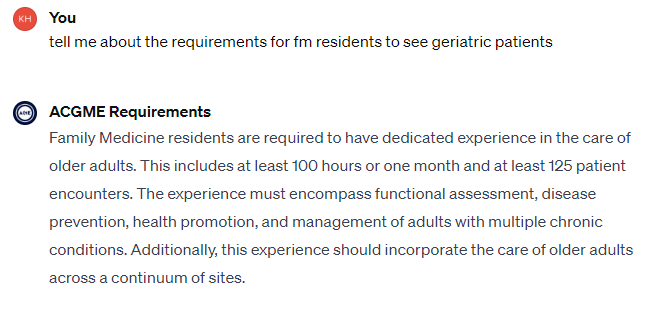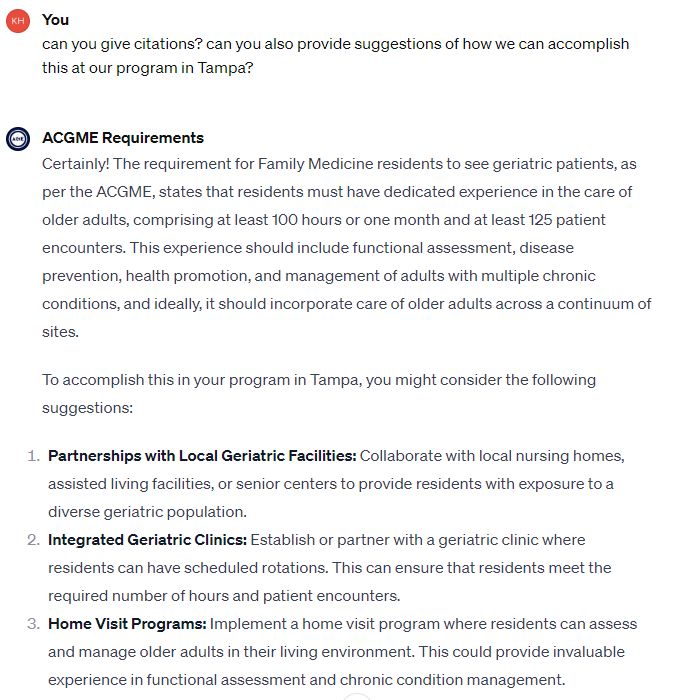Educators in Medicine,
In this newsletter, we continue our journey through the fundamentals of AI, its applications in medicine, and its transformative role in faculty development and education. Let’s dive into learning.
AI 101 - A Primer on Artificial Intelligence
During a drive home after a recent Family Medicine conference, I was able to share the versatility of ChatGPT with my family. I thought it would be a good appetizer for this newsletter.
We were tired, it was late, and my daughter did not want to go to sleep on the drive. We tried everything from singing, playing white noise, to warm milk. Somehow, her 23 month-old motors were not slowing down. I asked ChatGPT's app to tell my daughter a bedtime story, seamlessly integrating technology into our family time.
It was an interesting tale, filled with talking animals in a fantasy land. It was seemingly random, with a disconnected plot, and not much of rising/falling action or character development. However, it met its purpose! My daughter was asleep by the time ChatGPT finished telling the story.
This anecdote not only illustrates the potential for work-life enhancements but also highlights the broader applicability of ChatGPT in clinical settings. For instance, we can utilize ChatGPT to assist in explaining complex medical concepts to my patients in languages other than English, like Arabic or Spanish. I am comfortable speaking in these languages, and understanding my patients, but there are nuances where I struggle. The tool does more than translate directly; it effectively follows prompts and can expound on topics as needed. This capability can prove invaluable when explaining the importance of a pap smear to a Spanish-speaking patient, ensuring she received crucial health information in a comprehensible and culturally sensitive manner. Keep this in mind, but the disclaimer is obvious: make sure you understand everything
This example demonstrates how ChatGPT will become an essential tool in both our personal lives and professional practice, enhancing communication and understanding across different languages and settings.
AI in Education - Competency Based Medical Education
As we navigate the evolving landscape of medical education, incorporating innovative tools like artificial intelligence (AI) can greatly enhance our teaching methodologies. One such AI tool that we discussed before are the customized GPTs we can now build with ChatGPT. Incorporating AI, specifically a GPT model, into medical education offers a revolutionary approach to meeting ACGME requirements.
Since my last newsletter, I was inspired to create a custom GPT for Family Medicine residencies and the various subspecialties and fellowships associated with them. This AI tool, accessible via the provided link, is a powerful resource for educators - program directors, core faculty, coordinators, and DIOs. I am building our family medicine residency with the help of ChatGPT! Game changer. Sadly, the only problem is that ChatGPT requires a ChatGPT Plus subscription to experience these!
Since it has ‘learned’ the ACGME rules, we can inquire. But then, it can be given context of our program, it can give suggestions on how to fulfill the requirements. It provided 8, but here are the first 3:
The GPT model was trained on a vast corpus of ACGME text data, including guidelines, and FAQ’s from the ACGME website relevant to family medicine and its subspecialties. This comprehensive training enables the AI to provide informed, context-sensitive responses to queries about ACGME requirements, effectively tailoring its guidance to the unique aspects of each subspecialty. I believe this can be built for each field with relative ease. By inputting specific questions, faculty can receive instant, detailed information on various aspects of their training and educational requirements, facilitating a more efficient and thorough understanding of ACGME standards.
However, while this tool marks a significant stride in medical education technology, it is crucial to recognize the AI's responses are based on its training data, and it cannot replace the nuanced, experience-based insights that human educators provide. Also, the AI does not possess the capability to adapt to the latest changes in ACGME requirements (YET!) unless it is retrained with updated data. Thus, while this tool is a valuable adjunct to traditional educational methods, it should be used as a supplement rather than a standalone solution.
3. What Can I Do Now?
You can do it all - from board prep to curricular design. But is it a Pandora's box? Read this article here - while I enjoyed their perspective, I’d love to know your thoughts. if you’re unfamiliar, Webster defines Pandora’s box as such:
To punish humanity, the other gods created the first woman, the beautiful Pandora. As a gift, Zeus gave her a box, which she was told never to open. However, as soon as he was out of sight she took off the lid, and out swarmed all the troubles of the world, never to be recaptured.
Get in touch and let me know your thoughts!
Thank you for joining us on this adventure. Stay tuned for more AI insights, best practices, and more future editions of AI+MedEd.
For education and innovation,
Karim
Share this with someone - have them sign up here.







